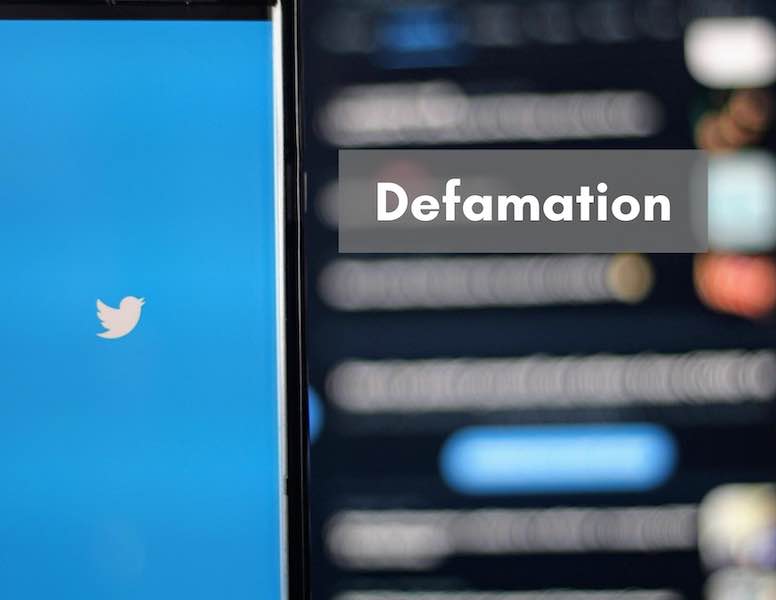Reputational War: Defending Oneself Against Defamation
by Henn Xhen Low ~ 6 February 2021
Defamation action can arise from both common laws claim i.e. tortious claim and statutory claim i.e. Defamation Act 1957 (“Act 286”).
Generally, there are two types of defamation claim:
- Slander; and
- Libel.
Heliliah Yusof J in the case of Wong Yoke Kong & Ors v Azmi M Anshar & Ors [2003] 6 CLJ 559 referred to Carter-Ruck on Libel And Slander (5th edn.) where it was stated that the essential requirements necessary to found an action of defamation were as follows:
- The matter complained of must be defamatory;
- The matter complained of refers to the Plaintiff; and
- The matter complained of has been published to a third person.
Only in the event where a Plaintiff has successfully proven the abovementioned requirements that a Defendant would be required to defence himself in a defamation suit.
The Federal Court in Abu Hassan bin Hasbullah v Zukeri bin Ibrahim [2018] 6 MLJ 396 held that the trial judged has erred in not determining whether the three essential ingredients for defamation have been fulfilled before deciding on the defences pleaded by the Defendant.
Hence, if the Plaintiff failed in proving the three ingredients above on a balance of probabilities, there wouldn’t be a case that the Defendant would need to defence himself.
Defences Available
(1) Justification
Section 8 provides that a Defendant can raise a defence of justification in a defamation suit.
A defence of justification simply means that the published statements or allegations are true and such defence is an absolute defence if proven successfully.
In order to successfully plead the defence of justification, the heavy onus is on the Defendant to prove that the published statements or allegations are true.
Hepworth J in the case of Abdul Rahman Talib v Seenivasagam & Anor [1965] 1 MLJ 142 held that in order to establish a plea of justification, the defence must prove that the defamatory statements or allegations are true. It is not sufficient to merely prove that he believed such statements or allegations to be true and they were published as belief only.
Abang Iskandar JCA in Dato Seri Mohammad Nizar bin Jamaluddin v Sistem Televisyen Malaysia Bhd & Anor [2014] 4 MLJ 242 had reiterated the principle, stating that:
“… in relying on the defence of justification the burden of proof is on the defendant to prove that the allegations made are true or substantially true. The defendant must prove it on the balance of probabilities, that is, the allegation is more likely than not to be true.”
In this case, the Defendants had published the defamatory statements based on their own interpretation and no verification whatsoever was made and thus they have failed to establish their defence of justification on the balance of probabilities.
Hence, in order for a defence of justification to be successfully pleaded, the Defendant ought to show that the defamatory statements or allegations published are true, not the fact that the Defendant merely believed them to be true.
(2) Fair Comment
Alternatively, a Defendant could raise the defence of fair comment provided under section 9 of Act 286.
The court in the landmark case of Joshua Benjamin Jeyaretnam v Goh Chok Tong [1989] 3 MLJ 1 laid down four crucial elements to be fulfilled in relation to a defence of fair comment as follows:
- The words complained of are comment, although they may consist or include inferences of fact;
- The comment is on a matter of public interest;
- The comment is based on facts; and
- The comment is one which a fair-minded person can honestly make on the facts proved.
The Court of Appeal in the case of Abu Hassan bin Hasbullah had also referred to Gatley on Libel and Slander (9th Ed) where it was stated as follows:
“To succeed in a defence of fair comment the Defendant must show that the words are comment, and not a statement of fact. He must also show that there is a basis of fact for the comment, contained or referred to in the matter complained of.”
Similarly, a defence of fair comment is an absolute defence and if a Defendant successfully pleaded this defence, he would not be held liable to Plaintiff in a defamation suit.
(3) Privilege
The defence of privilege is divided into two categories, namely the absolute privilege and the qualified privilege.
The defence of absolute privilege has been provided under section 11 of Act 286 provides that any fair and accurate report of proceedings heard before any court of law shall be absolute privileged and any fair and bona fide comments regarding the same shall be protected.
However, this particular defence shall not be applicable in the event that the publisher knew or ought to have known of any such reversal, quashing or variation of the court judgment, sentence or finding.
Abdul Malik Ishak J in the case of BHLB Trustee Bhd & Anor v HSBC (M) Trustee Bhd & Ors [2006] 4 MLJ 48 has stated that the defence of absolute privilege is also extended to the following:
- Parliamentary privilege;
- Judicial privilege;
- Official privilege;
- Statutory privilege;
- Reports of parliamentary proceedings in whatever forms;
- Newspaper reports of judicial proceeding; and
- The question of public policy.
On the other hand, the defence of qualified privilege has been provided under section 12 of Act 286.
The court in Ayob Saud v T.S. Sambanthamurthi [1989] 1 CLJ Rep 321 stated that when a defence of qualified privilege is raised, the burden lies on the defendant to prove that the statement is made honestly, and without any indirect or improper motive.
The defence of qualified privilege shall not be sustainable if it is proved that the publication is made with malice which include out of spite or ill-will or some other wrong or improper motive.
Mitigation
(1) Unintentional Defamation
Section 7 of Act 286 provides for a defence against unintentional defamation.
If the person who has published statements or allegations alleged to be defamatory claims that the statements or allegations have been published innocently, he shall make an offer of amend under section 7.
An offer to amend under section 7 would include but not limited to, to publish a suitable correction of the statements or statement complained off, with a sufficient apology to the person aggrieved in respect of the words or statement.
In the event such an offer was not acceptable to the aggrieved party, such offer can be used to mitigate damages assessed in the event that a defamation suit is succeeded against the publisher.
In the event that the defences pleaded above failed, a Defendant can still plead for a mitigated amount of damages to be paid to the Plaintiff.
(2) Apology
Section 10 of Act 286 provides that if a Defendant had offered an apology to the Plaintiff before the commencement of the suit or as soon after as he had an opportunity of doing so, such offer to apologize can be presented as evidence in mitigation of damages to be assessed by the Court.
However, in order for an apology under section 10 to serve as a mitigating factor, such apology or offer to apologize need to be made promptly.
Hue Siew Kheng J in the case of Pua Kiam Wee v Utusan Melayu (Malaysia) Bhd [2016] 3 CLJ 498 opined that the primary consideration for the application of section 10 is that the apology or offer to apologize must be made promptly, as soon as the circumstances of the case warrants it.
A delayed apology would require an explanation.
In the case of Pua Kiam Wee, the apology by the Defendant was made some 6 months after the publications of the article complained of, and after trial dates had been fixed. The judge found no promptness in the apology and it was just a perfunctory apology. Hence its mitigating effect is diminished by the delay.
Conclusion
In a nutshell, the above are several common defences in which a Defendant could be raised in the event that one is sued in a defamation suit.
However, as the saying goes, prevention is better than cure. Thus, it would be advisable that every one of us check and verify all of our publication to prevent being dragged into a defamation suit.

